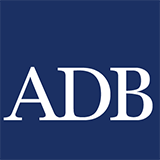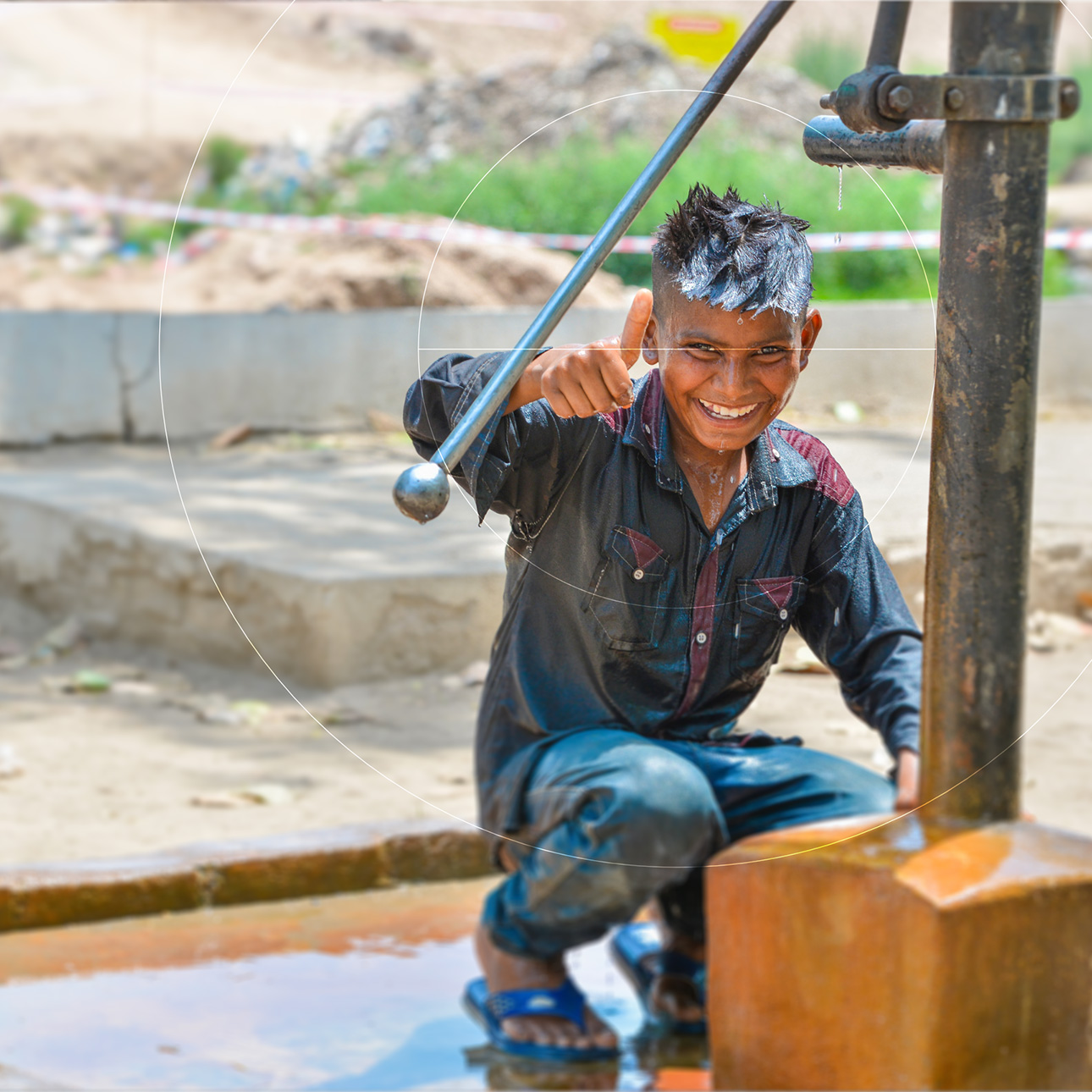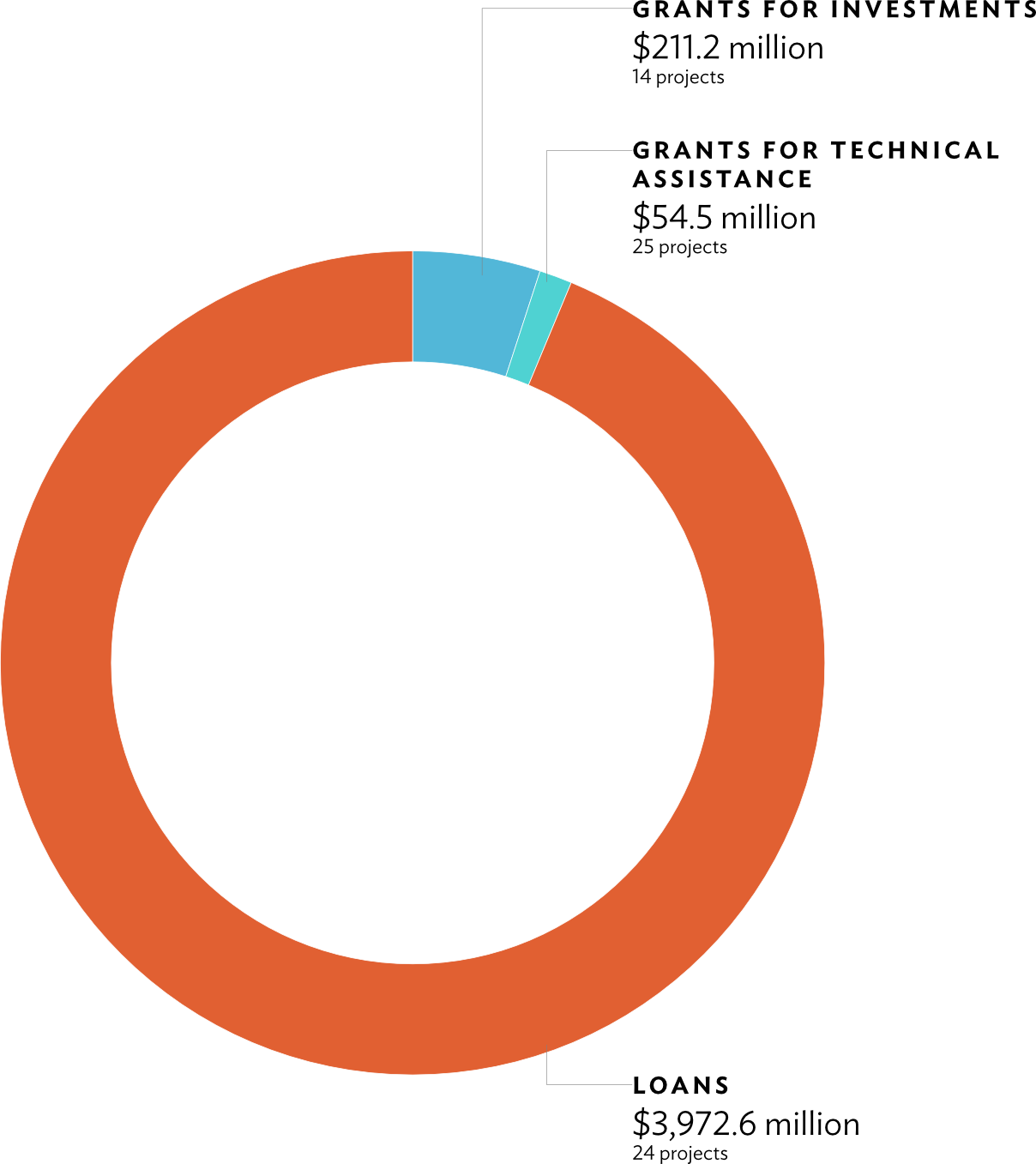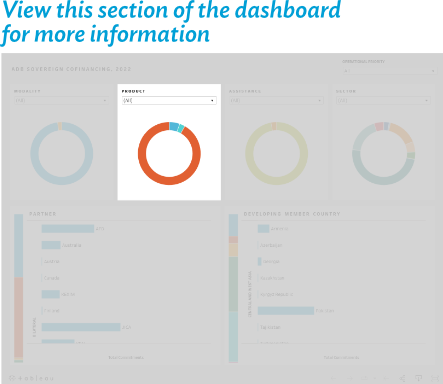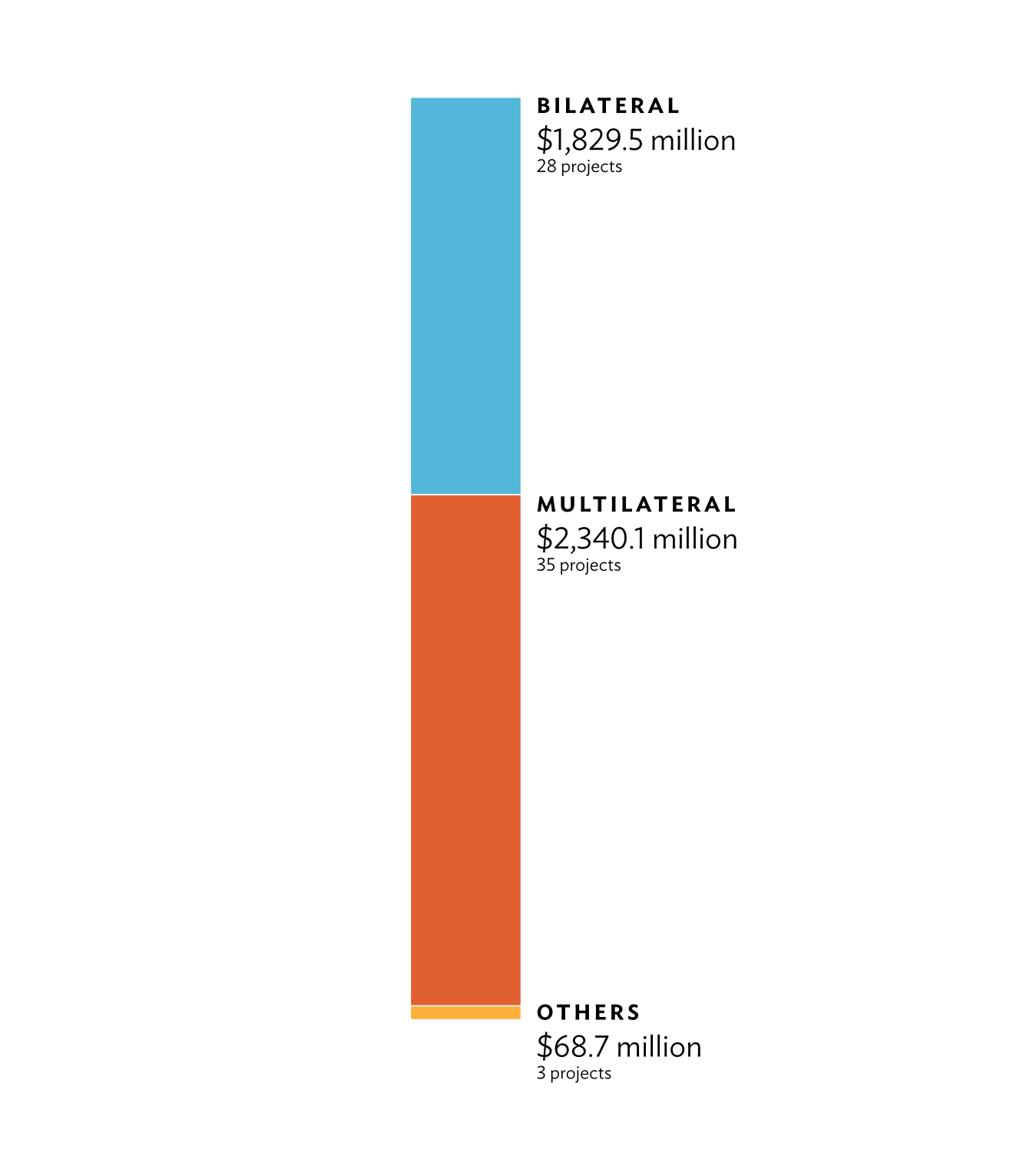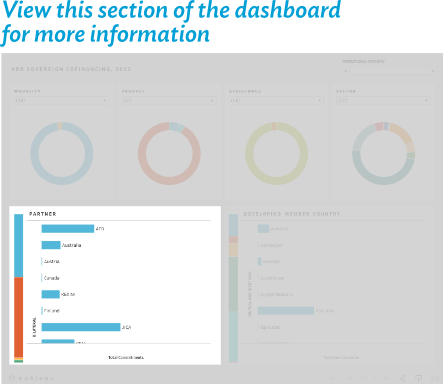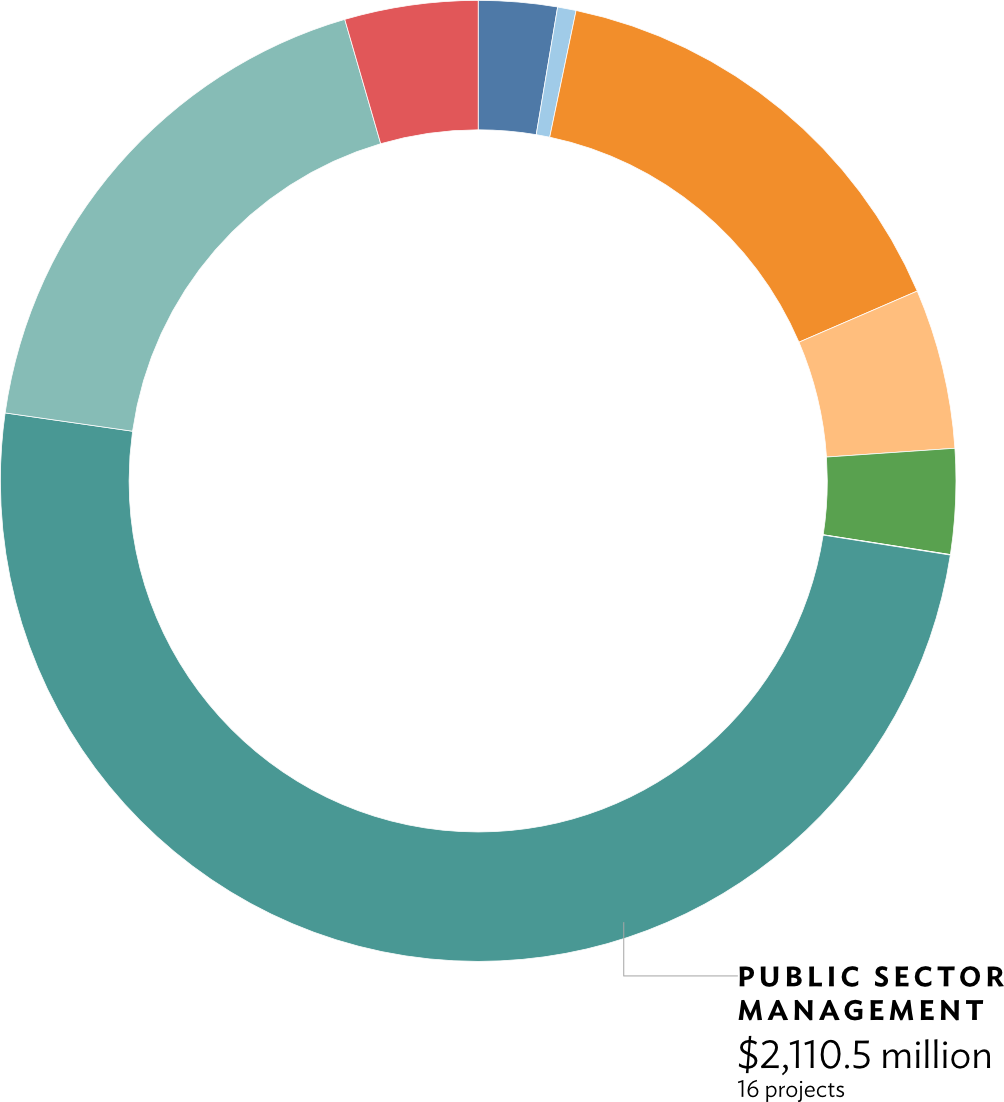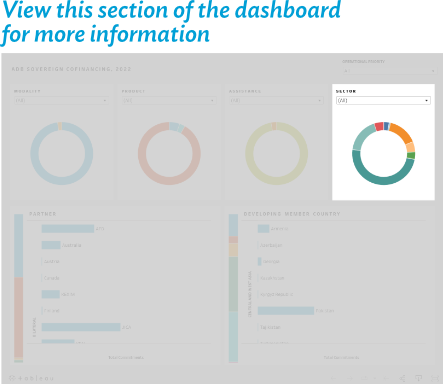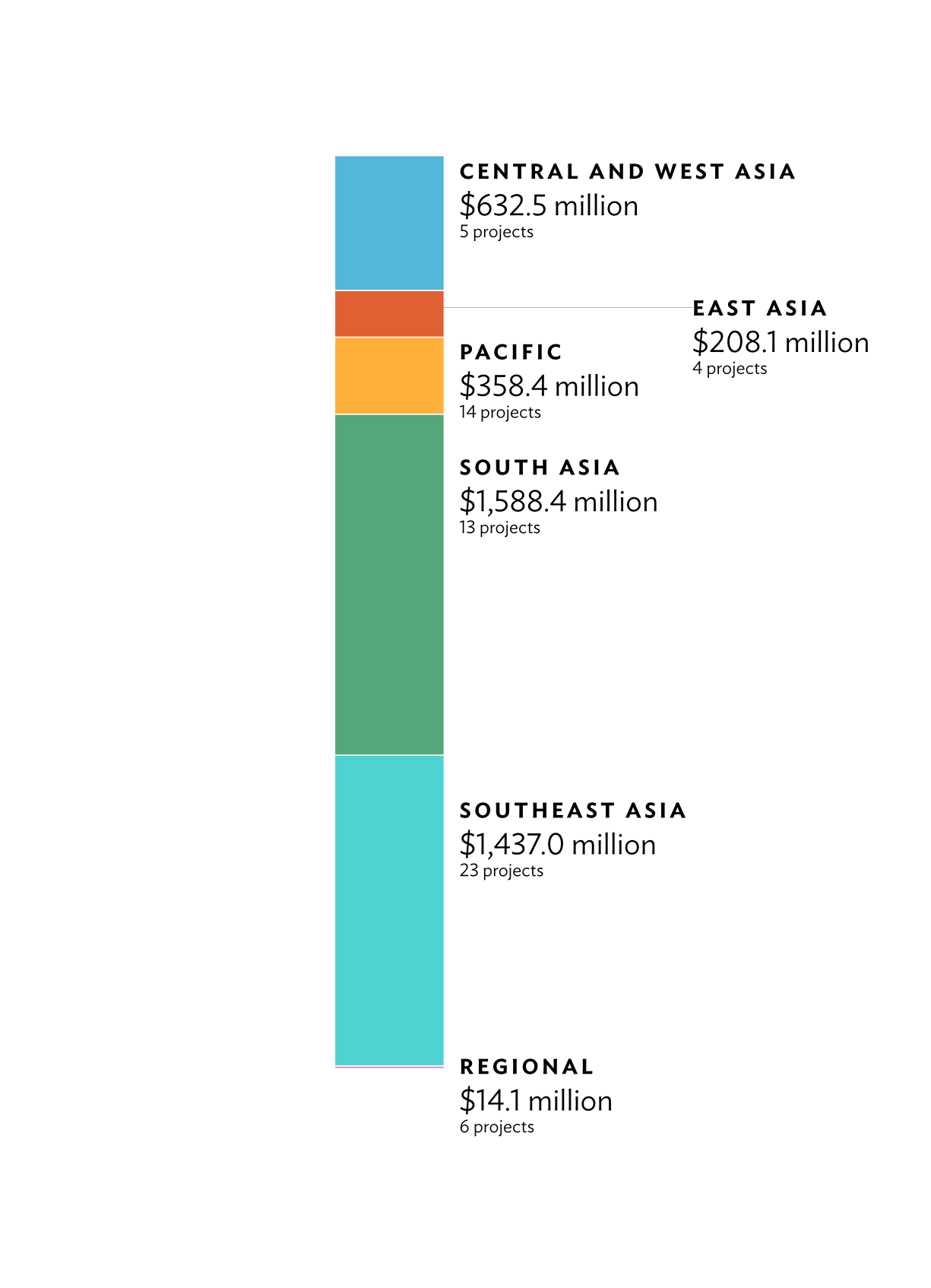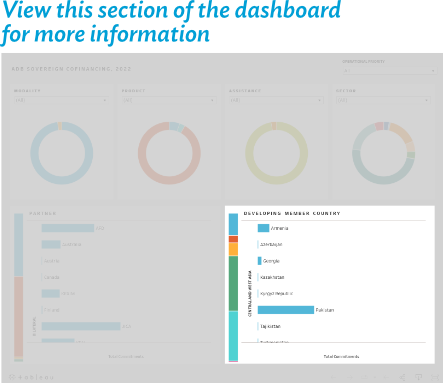Partners directly provide contributions to specific ADB sovereign projects through the project-specific cofinancing (PSC) modality. These projects can come in the form of either investment projects or technical assistance (TA). There were 124 sovereign projects in 2022; of these, 59 were PSCs. These PSCs amounted to roughly $4.2 billion, which makes up 98% of the total $4.3 billion cofinancing commitments for 2022.
Project-specific cofinancing refers to grant or loan contributions made by partners to support a particular ADB project.
ShareProject-Specific Cofinancing by Partner
Bilateral partners committed about $1.8 billion to 28 projects in 2022, while multilateral partners contributed roughly $2.3 billion to 35 projects. Other partners, such as concessionaires and the Korea Energy Agency, committed $69 million to cofinance three projects.
Among all partners, the Asian Infrastructure Investment Bank (AIIB) provided the biggest loans to the PSC, lending about $1.4 billion to cofinance eight projects. For the bilateral partners, the Japan International Cooperation Agency provided the biggest contributions, committing roughly $700 million to support three projects. Australia supported the most number of projects, contributing to 11 in 2022 with $167.4 million in grants and loans.
Project-Specific Cofinancing by Sector
In 2022, there were 58 initiatives that had specific sector targets. These targets include agriculture and natural resources, education, energy, finance, health, public sector management, transport, and water and urban services.
Sixteen of these PSCs targeted public sector management, with a cofinancing amount reaching up to $2.1 billion, comprising almost half of the total PSC. Only one project targeted multiple sectors. An example of a public sector management project in the region is the Building Resilience with Active Countercyclical Expenditures (BRACE) Program in Pakistan, which received the highest PSC support in 2022, with $500 million in loans from the AIIB. The BRACE program aims to boost the country’s efforts to ensure food security and price stability, provide business support and direct social assistance, and offer entrepreneurship and employment assistance.
Project-Specific Cofinancing by Location
In terms of number, Southeast Asia was the region with the most PSCs. Almost 40% of the PSCs in 2022 were concentrated in this subregion where 23 out of 59 initiatives were implemented. Of these PSCs, nine were implemented in Indonesia, seven in Cambodia, four in the Philippines, and three each were conducted in Thailand, Timor-Leste, and Viet Nam. The PSCs in the region totaled $1.44 billion. The Smart and Livable Cities in Southeast Asia is one of these projects. It covers Cambodia, Indonesia, the Lao People’s Democratic Republic, Malaysia, the Philippines, Thailand, and Viet Nam. This initiative is helping Southeast Asia plan and develop livable cities that are smart, inclusive, environmentally sustainable, resilient, and competitive.
The PSCs in South Asia reached roughly $1.6 billion, the biggest among all the regions in Asia and the Pacific. These were invested in 13 projects, 5 of which are in India, and 4 each in Bangladesh and Nepal. There were also PSCs in Sri Lanka (3), Bhutan (1), and Maldives (1). One such PSC is the Supporting the School Education Sector Plan in Nepal, supported by the European Union, United States Agency for International Development, UNICEF, and the governments of Finland and Norway. The project is helping Nepal reform its educational system to reduce inequities, improve quality, and accelerate recovery from learning losses brought by the pandemic.
In the Pacific, ADB and its partners implemented 14 PSCs totaling $358.3 million. Five each were implemented in both Fiji and Solomon Islands—with cofinancing reaching $312 million, $192 million of which were for projects in Fiji—and four in Papua New Guinea.
There were five PSCs in Central and West Asia, with an equivalent amount totaling $632 million, and two PSCs in East Asia with a corresponding $208 million commitment.

